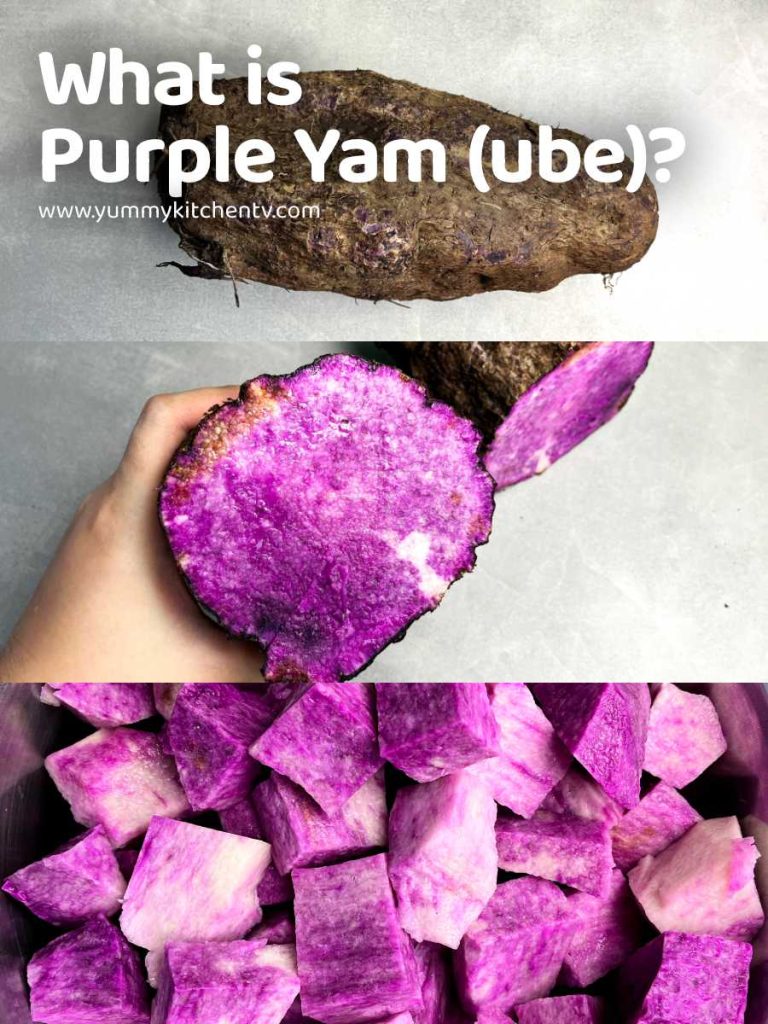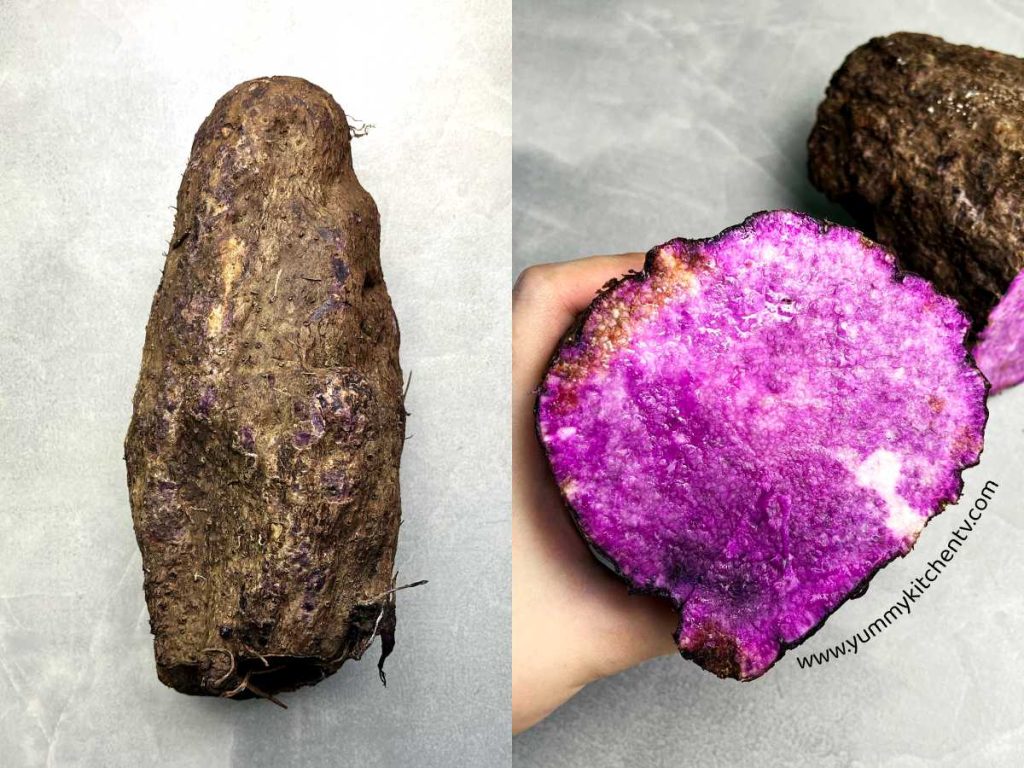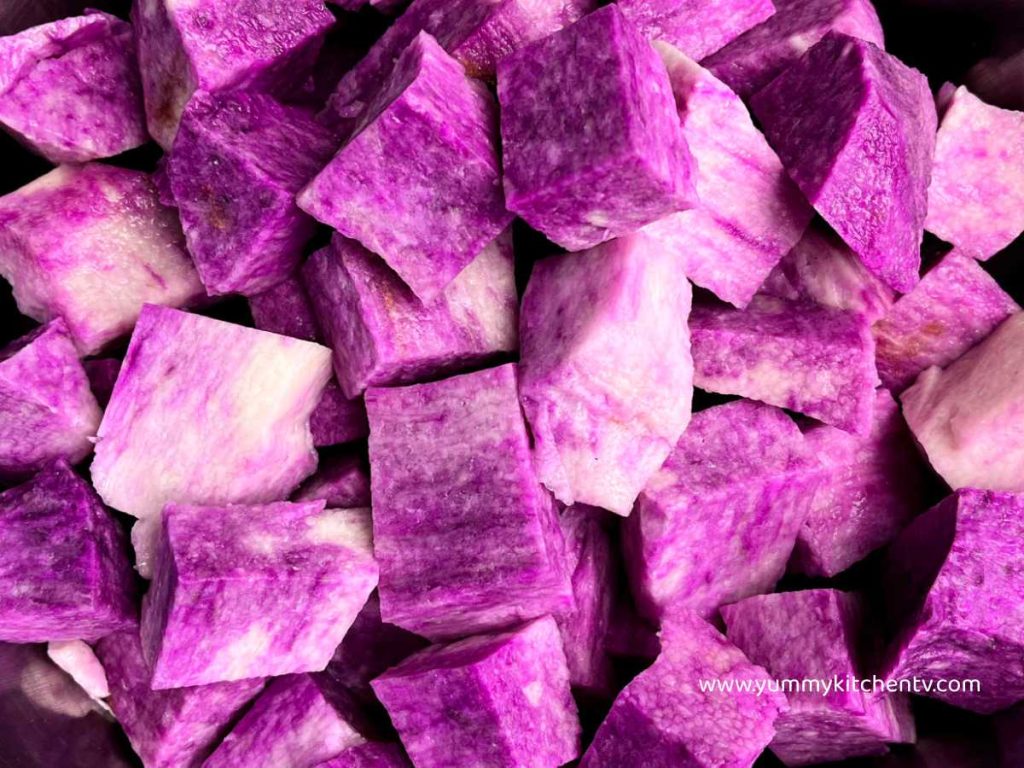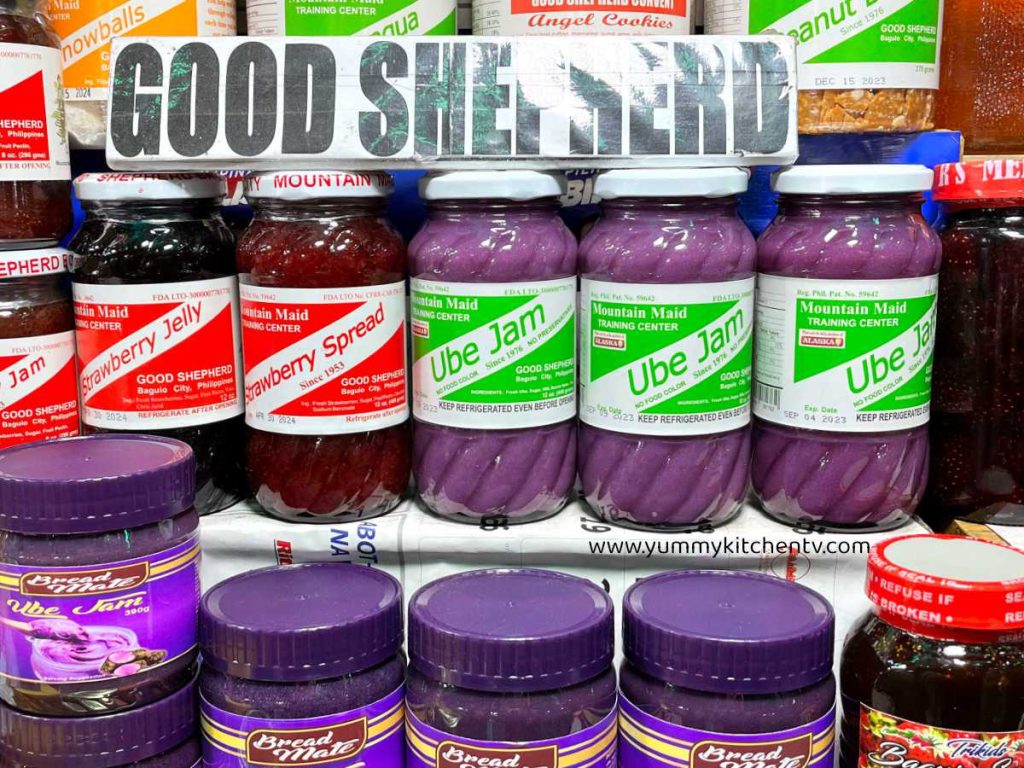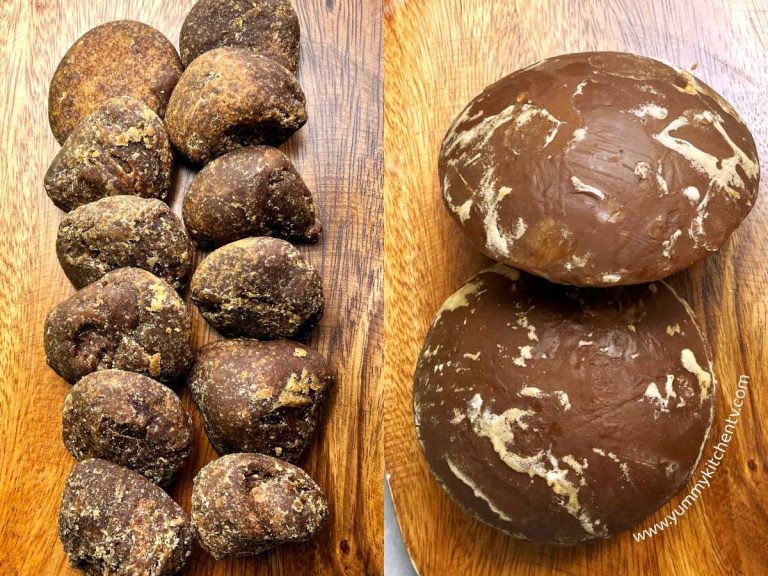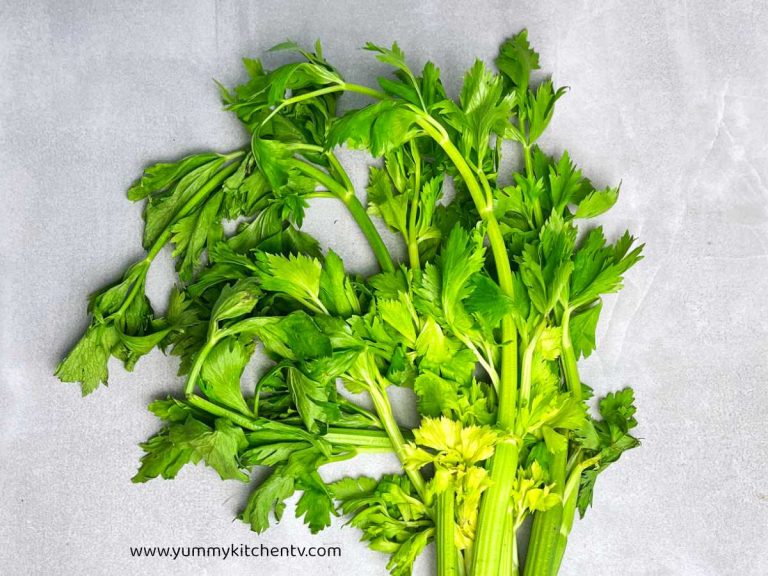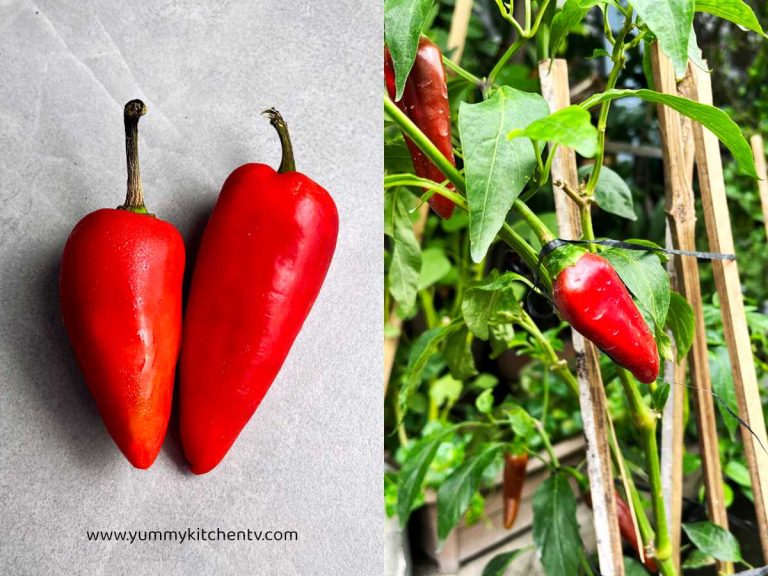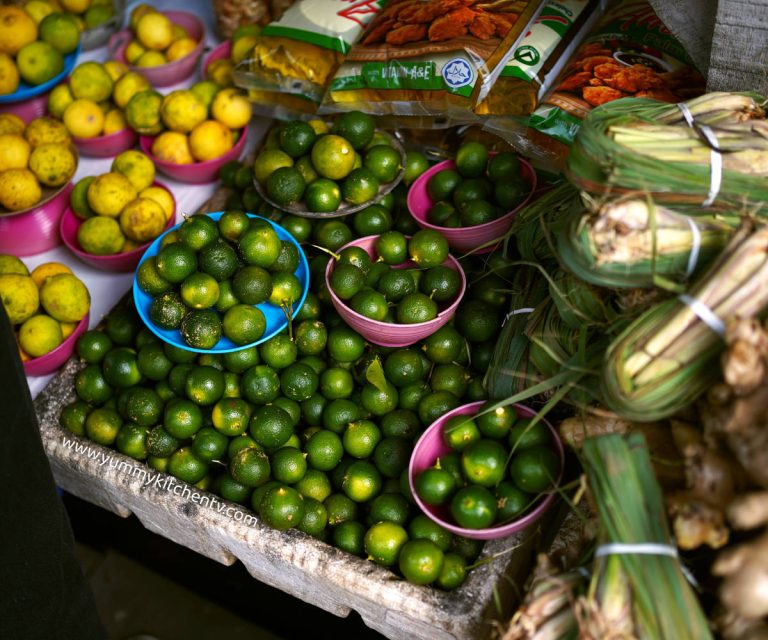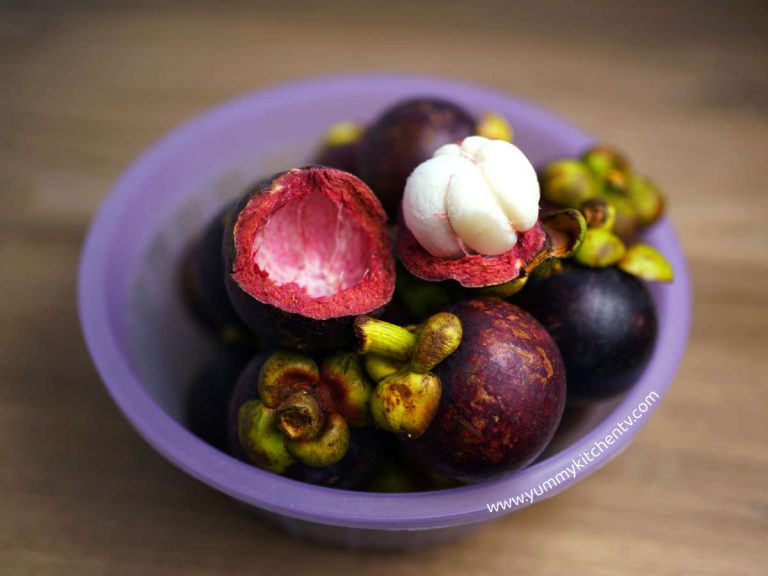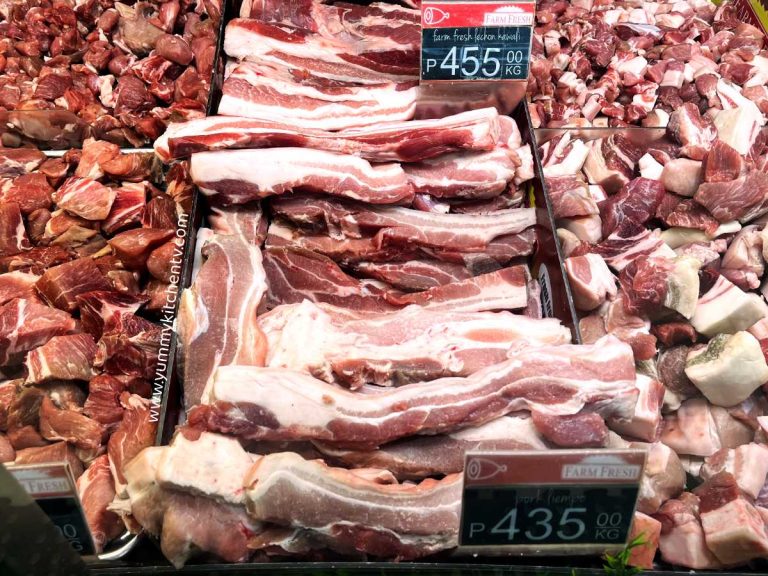Purple Yam
Purple Yam is a delightful ingredient for the eyes and taste buds. This pretty purple colored starchy root crop also known as ‘Ube’ or “Dioscorea alata’ is not only desired for its warm vanilla-like taste and added coloring that makes everything look good. These are also a good source of vitamins, carbohydrates, and potassium. There’s just something about this bright purple tuber that just adds a certain flair into the dish. This humble root crop paired, added, or used as the main ingredient just makes everything seem more fun and jubilant. You can usually find this yam made into halaya ( paste ), jam, ice cream, or the well known ‘ube pandesal’. Looking for a beautifully looking and tasting twist to your recipes? Try this ingredient!
A Short Introduction
“Ube”, pronounced ‘ohh-beh’ in Filipino is commonly known as “Purple Yam” in other countries originated in the Philippines. Found in tropical countries, not to be confused with the purple sweet potato or taro. The difference between yam and taro (Ube vs Taro) is that Ube is sweeter, has a deeper purple coloring, and has a nutty slightly vanilla-like undertone. Taro is best used in more savory dishes as it gives a slight heat or warmth into the dish, is lightly colored, and is earthy and a tad nutty in flavor. For others wondering about the purple yam vs sweet potato; yams are less sweet compared to sweet potatoes, are starchier, and drier when cooked.
This ube root crop is a bit more mellow, having a nutty taste with some describing it to have a subtle vanilla flavor. Mostly used for desserts, while sweet potatoes and taro are preferred for savory dishes. It was in the 2nd earliest Philippine cookbook when the recipe for ‘Ube jalea’ or Ube halaya’ was found and the purple yam was turned into a dessert. The basic instructions of boiling it in water till it softens, mashed till smooth, then cooked with sugar and water or coconut milk. Eaten as is, or as a jam. Making its way to many Filipino childhood dishes. A delightful ‘pasalubong’ or souvenir bought by many from Baguio, a province in the Philippines, known for its ube jams made by nuns as a way to feed the residents. Later it became a landmark and souvenir shop. Ube jam or halaya are a popular gift or bottled good to bring back a piece of home.
How did this Filipino purple potato take the culinary world by storm? Is it just by the gorgeous purple hue desserts like the summer favorite purple yam ice cream (ube ice cream), a nice refresher like ube latte or milk tea, other sweets like macarons, cakes, ube cupcakes, ube brownies, ube pancakes, ube cheesecake, and many more snacks or desserts popping up on your Instagram feed lately? Probably! These snacks are made with a base of halaya or paste that is ube boiled, mashed, then cooked with condensed milk, then used for flavoring cakes and as fillings instead of the root crop itself. Ube Halaya is more concentrated in flavor and is easier to mix into baked goods without disrupting much of the moisture content and texture of the recipe. But you can also substitute this with ube flavoring. Where to buy ube flavoring? Or Where can I buy Ube halaya? You can find these in most Asian aisles in grocery stores, specialty baking stores, or your local Filipino goods store.
Purple Yam nutrition
Ube, pronounced as ‘ooh-beh’, has similar benefits as the sweet potato. Eaten freshly steamed and peeled without any fusses, to fried into chips, added into baked goods and other desserts. Ube isn’t just a feast for the eyes and taste buds. It’s great for overall health as well. Purple Yam calories count to 120 calories for a serving of 100 grams. Though it should be mentioned that though the purple yam is a natural sweet vegetable with a lot of advantages, going wild on desserts that have ube as the main component still has sugar, flours and other ingredients, so do eat them in moderation.
- High levels of antioxidants and vitamin C, protecting the cells and radical damage. Lowering the risk of colon, lung and prostate cancer.
- Has a good amount of potassium and carbs, making it good for people who are interested in weight loss.
- Manages blood sugar levels. Flavonoids found in yams are good for those with type 2 diabetes.
- Lowers blood pressure and risk of stroke and heart attacks.
- Great for gut health, Ube promotes good bacteria that helps with digestion. Helps breakdown fiber and carbs.
What Ube is to the Philippines
Purple Yam in Tagalog ‘Ube’ is more than just a trend. Loved by many for not only its wonderful and natural way of coloring food, but the flavorful outcome of its sweet, earthy and a bit nutty, and vanilla-like in flavor. A versatile staple in the Philippines. This photogenic veggie helped give way to people’s interest in Filipino cuisine. Found in both sweet and savory dishes or eaten by itself by steaming or boiling over the stove. There are so much genius ways to add ube into your dishes, here are just some examples of purple yam recipes:
- Ube Pandesal, a fluffy purple soft bun, ube bread filled with purple yam to add that extra sweetness and fun pop of color.
- Ube Cheese Buchi, a chewy rice ball akin to mochi, covered in sesame seeds. Typically filled with white or red bean paste. Gained more popularity by adding ube and cheese or both as the filling.
- Ube cake (Purple Yam cake), popularized by ‘Red Ribbon’ a Philippines based bakery. This soft fluffy cake is colored by using halaya, giving it its rich purple coloring, layered with cream cheese frosting. What can be more decadent than this?
- Ube milk tea (ube boba), your regular milk tea made prettier with a pastel violet hue and ube flavored tapioca balls.
- Ice cream, a perfect introduction to anyone who’d like to get a taste of ube. Well received by many, you can’t go wrong with this.
- Puto, a traditional Filipino snack made of rice flour and coconut milk made even better with a bit of ube.
- Ube Turon, a simple snack you can find at food stalls inside malls or from street vendors. Bananas filled with chocolate, jackfruit, or ube in the middle, wrapped in lumpia paper, sometimes tossed in brown sugar then fried to a crisp.
Ube’s domination in the culinary world was unexpected but very welcomed. Ube shows it’s foodhold in par with other popular ‘healthy ingredient’ based dishes. Garnering more than a million views, the point of its popularity being the ube doughnuts from the Social Club ,a New york based restaurant in 2016. Then slowly became embraced by many purple colored fans, bakers, foodies, and other restaurants creating yam based desserts that are still popping up in our social media feeds.
#PurpleYam #Ube #FilipinoDesserts #PinoyFood #UbeLovers #RootVegetables #FilipinoCuisine #HealthyEating #SweetTreats #UbeDelights


